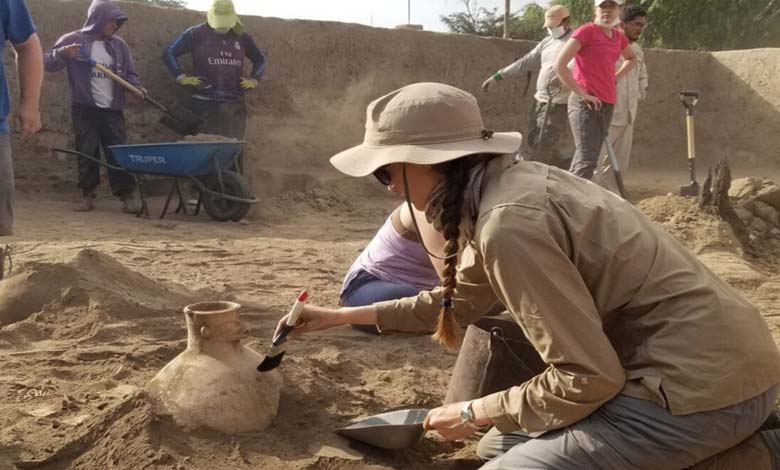Archaeologists Find 6,000-Year-Old Ceramic Fragment

Archaeologists in Russia have uncovered fragments of a 6,000-year-old ceramic vessel at the “Kirillo-Belozersky” Museum Reserve, providing evidence of a Neolithic settlement at the site of Europe’s largest Orthodox monastery, according to “RT”.
-
Archaeologists Discover Oldest Known Bread in the World
-
Revealing Fascinating Facts About the City of Fire and Hell, Pompeii
Research indicates that this artifact dates back to the late Neolithic period and was likely created in the second half of the fourth millennium BCE.
The reserve’s director, Mikhail Sharomazov, stated, “Excavations are underway in the Povarniya building, which dates to the 16th century. Archaeologists from Vologda have uncovered a ceramic vessel dating to the fourth century BCE, the Neolithic period.”
-
Ecuador: Dozens of unidentified bodies decomposing in morgue
-
20 Centuries Old: Discovery of Golden Jewelry from a “Mysterious” Culture in Kazakhstan
Alexei Oulanov, director of the “Vologda Archaeology” institute, noted that this discovery confirms that the area where the Kirillo-Belozersky Monastery now stands was suitable for habitation over six thousand years ago. The ceramic vessel was found in the passageway between the kitchen and the dining hall.
According to him, the materials discovered confirm that settlements existed in this area during the Stone Age. Pottery fragments from the Neolithic Revolution – a period when humans learned to fire clay, making it hard, waterproof, and usable for cooking and food storage – have been unearthed.
-
Discovery of ‘Book of the Dead’ in an ancient Egyptian tomb
-
Thought It Was Chocolate… Norwegian Finds “Luxurious Necklace”
“Comb Ceramic Culture”
The vessel measures around 60 cm in diameter and 40 cm in height. Archaeologists believe it belongs to the “Comb Ceramic Culture,” as suggested by the decorations on its surface.
According to the researchers, the pot may have been used to store bulk products like grains, as well as meat or fish, given that the area’s inhabitants were actively engaged in hunting and fishing.
-
After 150 Years of Excavation… Discovery of a Stone Age Village in France
-
Discovery of Sunken Roman Ship Filled with “Precious Pottery” in the Mediterranean
The presence of soot on its outer surface also suggests that the vessel may have been used for cooking. More in-depth research will be required to determine the exact use of the pot, according to “tvbrics”.












